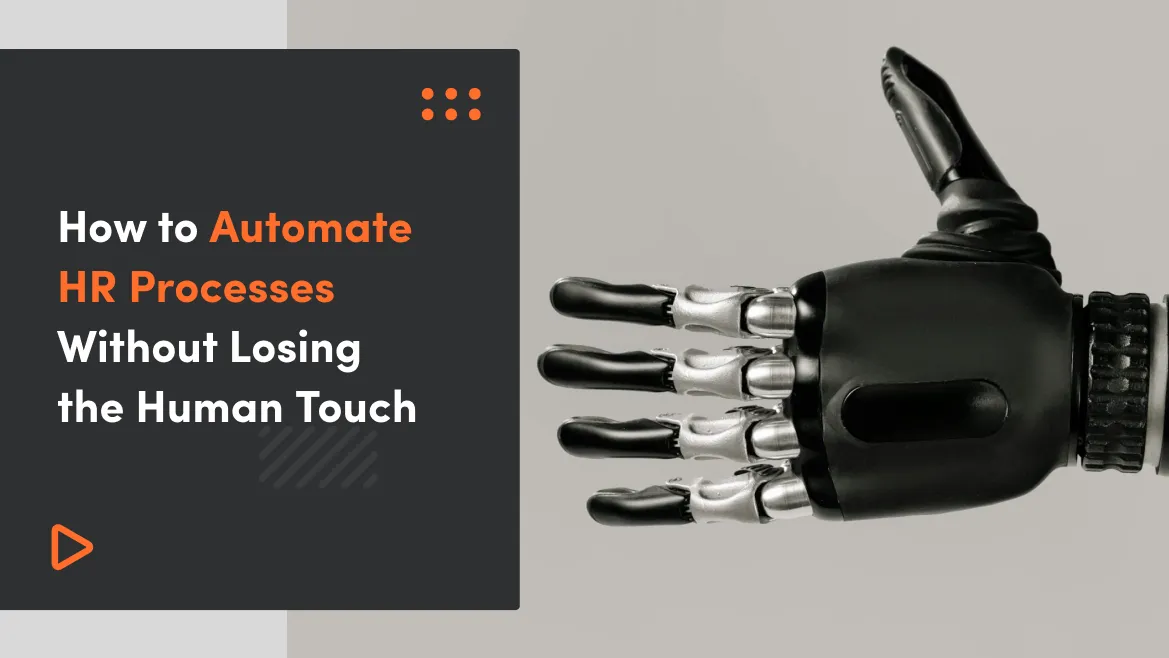Turning a simple idea into a million dollars business is not a one-person job. It requires the right team with excellent skills and relevant experience. Hiring the right people is one of the main foundations for any business. If you fail to bring the right talent to your company, then forget about being successful. In the pandemic era, hiring the right people would have been nearly impossible, but thanks to recruitment software, you can find the rockstars for your company in minimal time.
Recruitment software or the applicant tracking system enables the HR department to manage and control their hiring requirements virtually and, in some cases, electronically. This software simplifies the process of tracking the progress and automates the process of job postings on various job portals.
According to Fortune Business Insights research, the Recruitment Software market is expected to grow by $3 billion by the end of 2025. Many businesses use the software, from agencies to SME’s and from large enterprises to new startups.
Based on the same Fortune Business report, the services industry uses the software more than all other industries, and its market share is 35%. North and South America is on top of the list for regions that used the recruitment software as the essential pillar for their HR departments. These regions alone hold a 45% market share.
So, the question is how to hire rock stars with recruitment software? You can find the answer to this question in this article.
What is Recruiting Software?
A Recruiting Software can be defined as a tool designed to streamline or automate some parts of the recruitment process for recruiters, talent acquisition professionals, HR agencies, and hiring managers. It includes functions such as sourcing, selecting, screening, and interviewing the candidates.
The popularity of recruitment software started growing in 1990 when hiring a candidate for a job shifted from newspaper to online. The best recruitment software can only be built on the best recruitment technology stack. The selection of stack provides you with the required features and saves money from getting wasted.
So, let’s look at how you can use the most basic, inexpensive, or even free recruiting tools to compete for talent with organizations using much more sophisticated software.
What is a Recruitment Technology Stack?
A recruiting technology stack is a combination of technologies used to find, attract, and hire the best talent. It will help improve the business impact on recruitment activities and connect and hire more qualified candidates. Only with the best recruitment technology stack can a business outperform its competitors in the war to hire the best talent.
Types of Recruiting Software

There are 7 most common types of recruiting software, but depending on your needs, you can consider various recruiting software tools. We will talk about the 7 types of software here:
#1: Job boards
Job Boards is a recruiting service that connects businesses with candidates. Many software solutions can help enterprises to automate external job postings on popular job sites. Many job boards pre-screen applicants on the company’s behalf and emphasize a candidate's potential based on their database resumes.
These boards have the option to advertise jobs based on salary range along with job descriptions. Applicants can reach out to the company with questions or directly apply to the Job Board’s open position.
#2: Candidate Assessments Software
There is software that can screen the right candidates for a business based on its eligibility criteria and job requirements. This software provides custom or pre-made assessments that you can assign to each applicant to confirm their proficiency level for required skills. Candidate assessment or testing tools are mostly used by technical fields such as computer science. It can still be used for various other jobs such as writers, editors, analysts, and others.
#3: Chatbots
Artificial Intelligence Chatbots are commonly used to increase interaction between the company and interested candidates. It can be integrated with the company website or any popular job posting site so that anyone who visits your job posting can be prompted with a chatbot to interact, encouraging them to apply for the posting. These chatbots can also automate responses to the most common questions, schedule interviews, and set reminders.
#4: Interviewing software
Interviewing software is more helpful either for remote hiring or a high volume of candidates. With this software's help, businesses can pre-design basic questions, and candidates can record the answer to those questions and submit via text, voice, or video. It is more like a pre-screening process that will help recruiters to determine which candidates you want to learn more about through an in-person interview.
#5: Applicant Tracking Systems (ATS)
Application Tracking System helps businesses collect candidate information from different platforms at every step of the hiring process. It helps businesses automated resume screening by searching keywords in resumes, cover letters, and other application materials. Using an ATS, multiple company members can see which candidates have been processed, improving company-wide communication.
#6: Candidate Relationship Management (CRM)
CRM helps a business to work alongside ATS software to develop interaction with candidates in the database. A CRM keeps a record of all past applicants and provides matches with relevant job postings. It helps businesses to emphasize the candidate experience and make the company more attractive to top candidates by contacting them at the right time for the most relevant job postings.
#7: Mobile applications
This is the era of gadgets and not laptops or desktops. Therefore a mobile-compatible application system helps applicants to apply for a job via mobile, allowing a business to capture more interested professionals. People who browse through mobile apps and social media for job postings, if the application system is not mobile-friendly, your company might lose the perfect match for the job. A mobile-friendly application helps prevent this from happening and guides the applicants through the hiring process simply and easily. In short, a mobile-friendly job posting has more potential for attracting and engaging potential candidates.
Benefits of Recruiting Software

There are numerous advantages of using recruiting software in your company. Some of the main benefits are listed below.
Increase Productivity
Recruiting software increases productivity by saving your time from collecting, screening, and interviewing qualified candidates. Much of that software is hosted on the cloud, giving you the ability to review potential job seekers on your mobile device. You can find the candidate’s resume, cover letter, and references all in one place. You don’t need to dig through different folders and files to find relevant information about one applicant.
Data Management
Through recruiting software, you can collect valuable data such as how many people have visited your job posting and how many of them have applied. This data will help you to optimize your job postings for the future.
Hiring Qualified Candidates
The main objective of any hiring application is to find a suitable candidate. Since a recruiting software tailored the list of qualified candidates based on your specific requirements and criteria, you only see a list of qualified applicants and not waste time with nonstarters.
Posting Jobs on Right Platforms
Businesses don’t know where to look for the right talent, but using a talent acquisition platform can analyze different job posting forums' potential and get suggestions from these portals to improve their postings to attract more candidates.
Create Attractive Job Posts
Recruiting software can also write interesting and attractive job postings, which can attract and engage more candidates to apply for the job.
Quality hiring platform can boost your hiring process's effectiveness and efficiency, giving you a central hub for all your recruiting efforts and candidate information.
Top Features You Need To Consider In a Recruiting Software
The success of implementing recruiting software depends a lot on having the right features in place. To help figure it out, here are 5 features that you need for great recruiting software.
Automate Hiring And Onboarding Workflow
Many recruiters are the CEO or Managers with no time or workforce to review all the applications received for a particular job posting. Recruiters will be even more strapped for time this year as LinkedIn reports hiring volume is up. In such a case, having software that can automate the hiring workflow, from screening, sourcing, and interview scheduling is a blessing in disguise.
You can list all the tasks taking the unnecessary time of your job and offload those tasks to the recruiting software.
Passive Candidate Management
Passive Candidates are the ones who are sourced from other sources like internal employees or anyone with a link to the manager. It is the second biggest source of hiring. The ATS sometimes fall short with passive candidate management. Recruitment software must have the ability to manage contacts from both whether they are sourced internally or externally.
Easy Integrations
Many recruiters are not tech-savvy. They need easy-to-use and straightforward software that can easily be integrated with other company software and databases. Therefore much-recruiting software comes with open API and partner marketplaces full of complementary software. This complimentary software saves time and money to find software best fit for a business’s requirements.
Intuitive and User-Friendly Interface
In the past, many recruiters complained about the recruiting software as being too crowded, clunky, and ugly. Learning from the previous mistakes, the modern versions of the recruiting software tend to be more intuitive and user-friendly and have a more attractive UI.
These UIs have more customization options, a drag-and-drop function, and data entry to automate the process as much as possible.
Analytical Dashboard and Reporting

Recruiting is now data-driven, which means that recruiting software should have the ability to gather all data in one place and provide analytical reporting that makes sense.
To improve your recruitment processes, you need to analyze data such as your candidates' source, the company’s hiring velocity, time to fill an application, cost per hire, and the application-to-screen conversion rates.
By analyzing these figures, you can easily understand what is going better and what needs improvement in the overall workflow. It will also help you to justify investing in better software tools for an underperforming recruiting function.
Other Key-Features of a Recruiting Software
There are additional capabilities that a recruiting software must-have so you get the most out of your investment. When investing in recruiting software, you should look for these functionalities as well.
- There should be flexibility on job-posting on the specific job boards that the company wants to use.
- It should be mobile-friendly for both candidates and recruiters.
- Applying for the job process should be fast and that lets candidates apply in minutes.
- A quick training and implementation period
- Flexible pricing means the software doesn't make you pay for features you don't need
- Scalability to grow with your business
- Ability to ensure and manage your compliance with hiring laws (e.g., Equal Employment Opportunity regulations, data retention and privacy laws)
How to Choose the Right Recruiting Software

When choosing the right recruiting software for your business, always do remember this wise quote from Dean Iacovetti, president and founder of Vanta Partners. He said:
Choosing the right recruitment software entails looking for something that aligns with your business's needs. Your business is unique, and so are your recruiting needs.
Here’re some pointers you should consider before choosing the right recruiting software:
Analyze your Company Needs
Ben Eubanks, the principal analyst at Lighthouse Research & Advisory, said:
The best recruiting software is going to depend on the size of the company, the industry, and the specific recruiting strategy it is pursuing.
It is important to understand the needs of your company. You should know better why your company needs recruiting software, does the recruiting software suits your industry or niche, and you will be able to hire people via recruiting software for your company? All these questions need to be answered first before making any other decision.
Decide on the list of required Features
If you decided after analyzing your business's overall condition to go with recruiting software, the next step is to decide on the list of features you need.
This includes considerations like whether you want to conduct video interviews or focus on social recruiting, Eubanks explained. Some platforms are built for these specific approaches, while others completely lack those features.
Choose a Ready-Made Or Build A Custom One
There are thousands of recruiting software on the shelves, but not all of them can meet your exact requirements. They may not fit into your requirements for many reasons. Based on your requirements, you can compare these available software solutions in the market, and if nothing fits your needs, it’s time to opt for custom app development. If you looking for more information, click on the video about choosing the right HR Software solutions for enterprise companies.
Analyze ROI of the Software with Outcomes
Who said that recruiting has no KPIs. In this modern business era, every business activity is associated with its outcome for the business ROI. Similarly, when you hire an employee, it participates in the development of the business. The hiring of the employee incurs some cost, which should be compared to the company’s business. Hence, you can link the KPIs to business-related outcomes.
You can also link the ROI of the recruiting software with your business outcome by analyzing the time and work it saves from filling the form, screening the resumes, contacting the applications, and scheduling the interviews.
Summary
As your business grows, human resources and recruiting becomes more critical and more complex. Recruiting software is a popular solution for businesses that need to coordinate hiring tasks. Consider implementing these recruiting software tools to improve hiring processes at your company. It will help your business in increasing efficiency and bringing qualified candidates for the job.
If your required features are not available in the ready-made software or you don’t want to pay for the features you don’t need, you can always opt for custom-built software. It might have a higher cost at first, but later it will be more profitable for your business.
Are you confused about deciding which software to go with? Don’t worry. Experts at Selleo are always available to answer any questions you have and guide you for what is best for your business.




